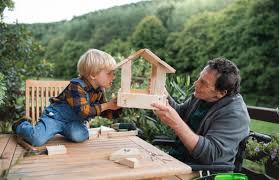
Home renovation projects can be both exciting and daunting, offering the opportunity to transform living spaces into personalized havens. However, embarking on a DIY renovation journey necessitates creating a safe environment to prevent injuries and ensure successful project completion. Whether you’re a seasoned home renovator or a novice, adhering to a range of safety practices is crucial. Here, we delve into comprehensive strategies to establish a secure DIY environment, emphasizing preventive measures and preparation.
Understanding the Risks Involved
“Every DIY project carries the potential for unforeseen risks. Awareness and proactive measures can significantly reduce the likelihood of injury.”
Before beginning any home renovation, it’s essential to acknowledge the potential hazards involved. These vary from handling power tools to working in environments with exposure to toxic substances or unstable structures. Assessing risks specific to your project is a preliminary step toward creating a safe working area.
Preparing Your DIY Workspace
Workspace Organization
- Declutter: Remove unnecessary items to prevent tripping hazards.
- Tool Management: Use storage solutions like pegboards or toolboxes to keep equipment organized and accessible.
- Designated Zones: Clearly define areas for cutting, assembling, and painting to optimize workflow and safety.
Personal Protective Equipment (PPE)
- Wear protective clothing such as long-sleeved shirts, long pants, and sturdy shoes.
- Use safety goggles to protect eyes from dust and debris.
- Equip yourself with gloves suitable for the materials you’re handling, whether they are latex, nitrile, or heavy-duty work gloves.
- Hearing protection is crucial when using noisy power tools.
Identifying and Mitigating Common Hazards
Electrical Safety
- Ensure all power tools are rated for home use and are the right tools for the job.
- Inspect cords and plugs for damage before each use.
- Use Ground Fault Circuit Interrupters (GFCIs) in wet or damp areas to prevent electrical shocks.
- Avoid overloading outlets and use correctly rated extension cords.
Handling Toxic Chemicals
According to Public Health Insider, household renovation often involves toxic chemicals found in paints, cleaners, and sealants. To mitigate risk:
- Choose products with the Safer Choice label to minimize exposure to hazardous chemicals.
- Ventilate the workspace by opening windows and using fans to disperse fumes.
- Always follow manufacturer instructions on usage and disposal.
Structural Considerations
If your renovation involves structural changes such as wall removal or floor replacement, consider hiring a structural engineer to assess the integrity of existing frameworks. This ensures:
- Load-bearing walls remain intact to avoid collapse.
- New structures are built to code, maintaining the safety and stability of your home.
Environmental Considerations
Home renovations can inadvertently affect indoor air quality. Homes with poor ventilation or those exposed to prolonged humidity can develop mold, which poses significant health risks.
Combatting Mold and Moisture
- Use dehumidifiers and ensure areas like basements and bathrooms are well-ventilated.
- Implement mold inhibitors, especially in paint, and consider mold-resistant drywall.
- Regularly inspect and promptly fix leaks around the house.
For comprehensive guidelines on mold mitigation, consult resources provided by the CDC on how to clean and prevent mold growth effectively.
Lessons from Retail Incidents
An often overlooked aspect of DIY home renovation is the potential for accidents, even in places less fraught with hazards than the average construction site. Retail environments such as home improvement stores, including large chains like Lowe’s, are designed to be as safe as possible for customers. Yet, despite stringent safety measures, incidents resulting in injury still occur, reminding both novices and seasoned renovators of the inherent risks in DIY endeavors.
While shopping for DIY supplies, customers may find themselves navigating aisles filled with heavy materials, sharp tools, and potentially hazardous substances. There have been instances where individuals have reported injuries sustained at home improvement stores — something that might seem surprising given the controlled nature of such environments. These incidents could involve tripping over misplaced items, being struck by falling objects from high shelves, or mishandling tools during product demonstrations.
Being injured at Lowe’s serve as stark reminders of the vulnerabilities that exist even with safety protocols in place. Retail workers are trained to prevent these incidents by maintaining clean aisles and ensuring products are securely shelved, yet human error and unforeseen events can lead to injuries.
Lessons Learned
- Heightened Vigilance: Just as in a workshop or home renovation setting, maintaining awareness of your surroundings is crucial in a retail environment. Shoppers should pay close attention to where they walk, especially in aisles packed with merchandise.
- Safe Handling Practices: When handling products, such as lifting heavy bags of concrete or navigating long pieces of lumber, ensure proper techniques. Utilize available safety equipment or seek help from store associates when necessary.
- Adhering to Safety Signage: Stores often provide safety warnings and instructions for a reason. Whether it’s advising against certain aisle activities or indicating wet floors, these signs are critical in preventing accidents.
- Requesting Assistance: Don’t hesitate to ask for assistance with retrieving or lifting heavy or high-placed items. Retail staff are trained to handle these materials safely.
- Learning from Demonstrations: Product demonstrations are intended to educate customers on proper usage and safety. Paying attention during these demonstrations can prevent improper tool usage both in-store and at home.
Ultimately, while retail settings like Lowe’s are fundamentally safer than a home renovation site, the lessons learned from incidents there underline the enduring need for caution. Each mishap serves as a valuable learning opportunity, reinforcing the importance of comprehensive safety practices that apply universally — from retail stores to the individual DIY project at home.
Final Considerations for a Safe DIY Environment
- Emergency Preparedness: Keep a first aid kit and fire extinguisher readily accessible at all times.
- Regular Breaks: Avoid fatigue-related mishaps by taking regular breaks to rest and hydrate.
- Education and Training: Familiarize yourself with the tools and materials by consulting manuals or participating in workshops.
- Insurance and Regulations: Ensure your home insurance covers DIY renovations and check for necessary permits before beginning work.
By following these guidelines, home renovators can minimize risks and create a safer environment for themselves and their families. Understanding and preparing for potential hazards not only ensures a smoother renovation process but also instills confidence in successfully completing DIY projects.
Write and Win: Participate in Creative writing Contest & International Essay Contest and win fabulous prizes.


